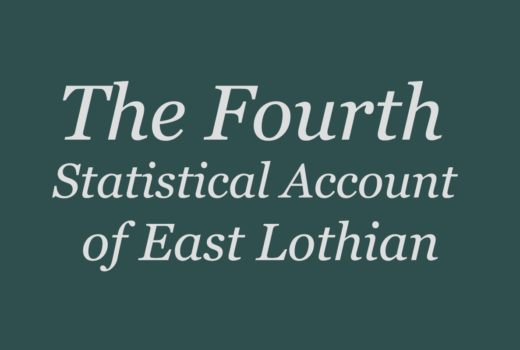Parish Representative
Pearl Young
Parish Editor:
Stephen A Bunyan
Introduction
Innerwick is a fortunate parish with the Lammermuirs standing sentinel at its back; surrounded by its famous fertile farms and with industry and a beautiful coastline on its doorstep, it is a parish which, because of its location, is steeped in history and has a varied natural beauty’.
When A.G. Bradley was one of a number of young gentlemen who spent time at Fenton Barns in 1870 to learn about agriculture at the high point of East Lothian farming. At that time, Fenton Barns was part of the Biel, and Dirleton and Innerwick, Estates. He wrote his fascinating account said, in 1927,
East Lothian has a character entirely its own, unlike any other in Scotland and still more unlike any in England. It might be likened to a vast garden lying between a rocky, broken coastline and a wild waste of moor. Not a garden county in the sense of flowery lanes and lush hedgerows but a garden of 20-30 acre fields geometrically laid out and divided by stone walls or thorn hedges. No space is wasted. At intervals stand the great farm steadings, bearing to one another a certain family likeness not common in the south. These ‘Dunbar Lands’ are the cream of the country – probably the cream of the earth.
Innerwick Exhibition
he could have been describing Innerwick parish in 2000: true then, true now.
The parish extends from the coast at Thorntonloch and Skateraw in to the high ground of the Lammermuirs. The coastal plain is amongst the most fertile land in the country while the uplands are wild pasture and grouse moor. The parish is about ten miles in length and two to three in depth, and covers some 3562ha (8802 acres).
The coast is rocky but tame compared to that of the neighbouring parishes, which have cliffs. There is some interesting and picturesque scenery at the interface between the coastal plain and the high ground. There is no large river but there are two important streams. The Monynut Water rises in the south west of the parish, forming part of the border with Berwickshire. The Thornton Burn rises close to the Monynut and flows from south to north to join the sea close to Thorntonloch.
Throughout the century, Scottish soldiers, sailors, airmen and auxiliary forces were at the forefront of the defence of Britain. They played their part in NATO and peacekeeping initiatives. During the first world war, Scotland’s losses were disproportionately higher than any other country: more than 100,000 Scotsmen died in action with more than 50,000 of these in the Highland division. During the second world war, many more were lost and the effect on Scottish home life was dramatic. The unconditional surrender of Germany signed on 7 May 1945 and celebrated the following day – VE Day – was greeted with joy and relief, although the war in the Far East was yet to be won. The surrender of Japan on 14 August 1945, with VJ Day the day after, finally saw the war over.
For some, 1945 was a time of rejoicing but for others it was a time to remember loved ones who would never return. Thousands of East Lothian men served in the forces at home and overseas and, with the outbreak of peace, waited to exchange their uniforms for ‘civvies’ and the ‘sartorial’ demob suit before returning home.
Life back home was not easy – some men came back to unemployment and without anywhere to live. Starting all over again with families they had – for years in some cases – known only through letters and photographs. The world wasn’t the smaller place it is now. Even having leave did not mean you could get home and, of course, hardly anyone had a phone.
Innerwick Exhibition
Up to 1945, there were still a few evacuees and still troops at Birnieknowes, manning the searchlight. For a short time there were still a few prisoners of war (POWs) and displaced persons (DPs), one or two of whom remained and became part of the local population.
